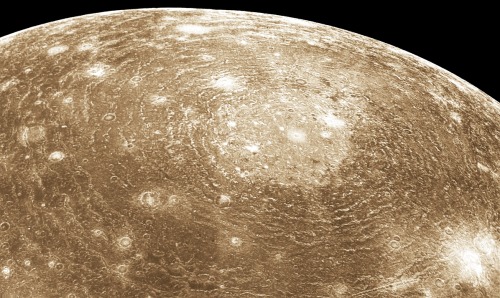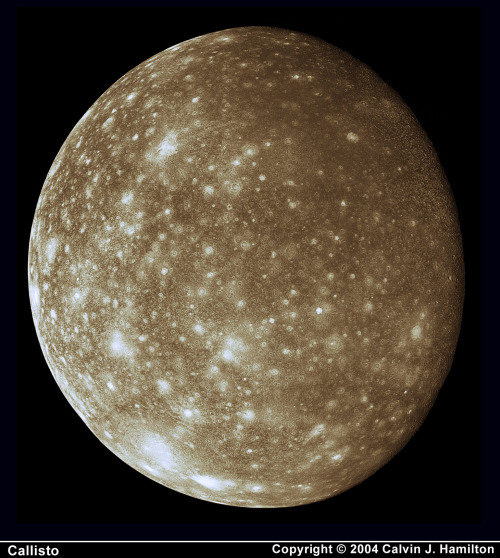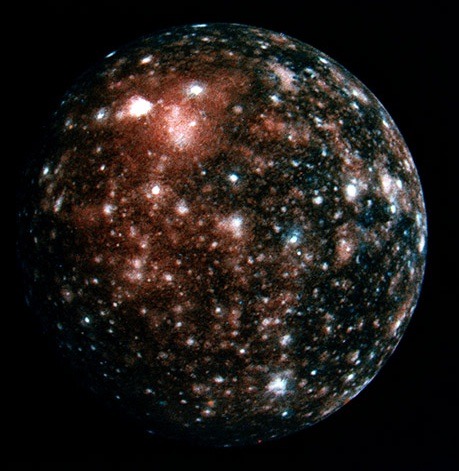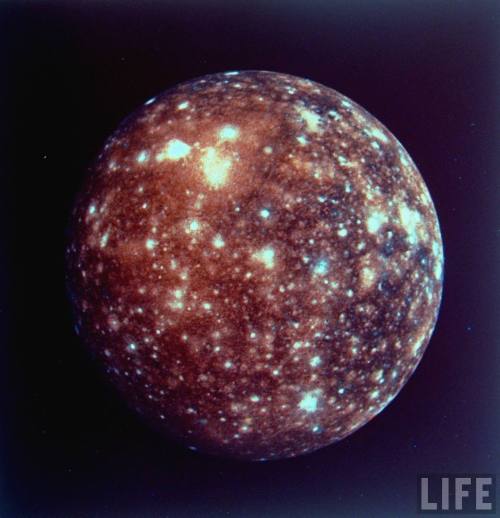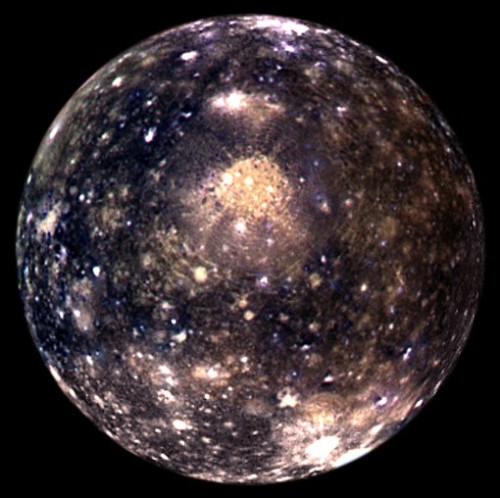Biggest Scientific Breakthroughs Of 2013
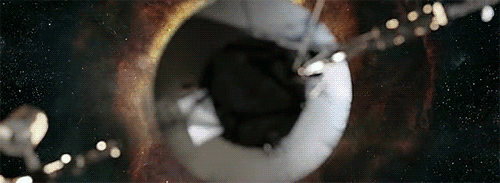
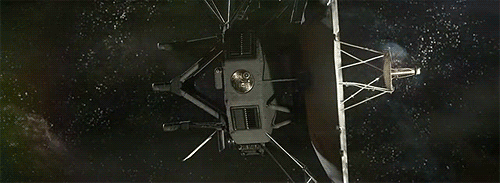
Biggest Scientific Breakthroughs of 2013
From intergalactic neutrinos and invisible brains, to the creation of miniature human “organoids”, 2013 was an remarkable year for scientific discovery. Here are some of the biggest scientific breakthroughs, innovations and advances of 2013.
Voyager I Leaves the Solar System
Escaping the solar system is no mean feat. For 36 years, NASA’s Voyager 1 spacecraft has putting distance between itself and the Sun at speeds approaching 11 miles per second. At a pace like that, scientists knew Voyager was approaching the fringes of the heliosphere that surrounds and defines our solar neighborhood – but when would it break that barrier? When would it make the leap to interstellar space? After months of uncertainty, NASA finally made the news official this September. “Voyager 1 is the first human-made object to make it into interstellar space” said Don Gurnett, lead author of the paper announcing Voyager’s departure; “we’re actually out there.”
The Milky Way is Brimming with Habitable Worlds
Planet-hunting scientists announced in November that 22% of sunlike stars in the Milky Way are orbited by potentially habitable, Earth-size worlds. This remarkable finding suggests there could be as many as two-billion planets in our galaxy suitable for life — and that the nearest such planet may be only 12 light-years away. Is Earth 2.0 out there? With figures like that, it’s hard to imagine otherwise. Who knows – with all the Kepler data we’ve got to sift through, there’s a chance we’ve already found it.
Curiosity Confirms Mars Was Once Capable of Harboring Life
In March, NASA scientists released perhaps the most compelling evidence to date that the Red Planet was once capable of harboring life. Earlier this year, Curiosity drilled some samples out of a sedimentary rock near an old river bed in Gale Crater. This geological area used to feature a series of stream channels, leaving behind finely grained bedrock indicative of previously wet conditions. Using the rover’s onboard instrumentation, NASA scientists analyzed these samples to detect some of the critical elements required for life, including sulfur, nitrogen, hydrogen, oxygen, phosphorus, and carbon. The rover is currently on a trek to its primary scientific target – a three-mile-high peak at the center of Gale Crater named Mount Sharp – where it will attempt to further reinforce its findings.
Researchers Detect Neutrinos from Another Galaxy
By drilling a 1.5 mile hole deep into an Antarctic glacier, physicists working at the IceCube South Pole Observatory this year captured 28 neutrinos, those mysterious and extremely powerful subatomic particles that can pass straight through solid matter. And here’s the real kicker: the particles likely originated from beyond our solar system – and possibly even our galaxy. "This is a landmark discovery,“ said Alexander Kusenko, a UCLA astroparticle physicist who was not involved in the investigation, "possibly a Nobel Prize in the making.”
NASA Discovers “A Previously Unknown Surprise Circling Earth”
NASA’s recently deployed Van Allen probes — a pair of robotic spacecraft launched in August 2012 to investigate Earth’s eponymous pair of radiation belts — turned out out some very unexpected findings in February, when they spotted an ephemeral third ring of radiation, previously unknown to science, surrounding our planet.
Human Cloning Becomes a Reality
A scientific milestone 17 years in the making, researchers announced in May that they had derived stem cells from cloned human embryos.The controversial technology could lead to new treatments for diseases like Parkinson’s and diabetes — while bringing us one step closer to human reproductive cloning.
Giant “Pandoravirus” Could Redefine Life as we Know it
Scientists in July announced the discovery of a pair of viruses that defy classification. Bigger and more genetically complex than any viral genus known to science, these so-called “pandoraviruses” could reignite a longstanding debate over the classification of life itself.
Brain-to-Brain Interfaces Have Arrived
Back in February, researchers announced that they had successfully established an electronic link between the brains of two rats, and demonstrated that signals from the mind of one could help the second solve basic puzzles in real time — even when those animals were separated by thousands of miles. A few months later, a similar connection was established between the brain of a human and a rat. Just one month later, researchers published the results of the first successful human-to-human brain interface. The age of the mind-meld, it seems, is near at hand.
There is Life at the End of the World
There is life in Lake Whillans. For millions of years, the small body of liquid water has lurked hundreds of meters below Antarctica’s Ross Ice Shelf, sealed off from the outside world and the scientists who would explore its subglacial depths. Earlier this year, a team of researchers led by Montana State University glaciologist John Priscu successfully bored a tunnel to Whillans and encountered life, making Priscu and his colleagues the first people in history to discover living organisms in the alien lakes at the bottom of the world.
Doctors Cure HIV in a Baby Born With the Disease
In a monumental first for medicine, doctors announced in March that a baby had been cured of an HIV infection. Dr. Deborah Persaud, who presented the child’s case at the 20th annual Conference on Retroviruses and Opportunistic Infection, called it “definitely a game-changer.”
Newly Discovered Skulls Could Prune Humans’ Evolutionary Tree
An incredibly well-preserved, 1.8-million-year-old skull from Dmanisi, Georgia suggests the evolutionary tree of the genus Homo may have fewer branches than previously believed. In a report published in October, a team led by Georgian anthropologist David Lordkipanidze writes that it is “the world’s first completely preserved hominid skull.” And what a skull it is. When considered alongside four other skulls discovered nearby, it suggests that the earliest known members of the Homo genus (H. habilis, H.rudolfensis and H. erectus) may not have been distinct, coexisting species, at all. Instead, they may have been part of a single, evolving lineage that eventually gave rise to modern humans.
Neuroscientists Turn Brains Invisible
Gaze upon the stunning effects of CLARITY, a new technique that enables scientists to turn brain matter and other tissues completely transparent. It’s been hailed as one of the most important advances for neuroanatomy in decades, and it’s not hard to see why.
[source | gifs → galaxyclusters]
More Posts from Fillthevoid-with-space and Others

After over a century of observations and several theories, scientists may have finally nailed the origin of the high-speed plasma blasting through the Sun’s atmosphere several times a day. Using a state-of-the-art computer simulation, researchers have developed a detailed model of these plasma jets, called spicules.
The new findings answer some of the bigger questions in solar physics, including how these plasma jets form and why the Sun’s outer atmosphere is far hotter than the surface.
“This is the first model that has been able to reproduce all the features observed in spicules,” Juan Martinez-Sykora, lead author and astrophysicist at the Bay Area Environmental Research Institute in California, told ScienceAlert.
Continue Reading.
This has been going on since 1995! There are so many pictures! I gotta check these out but it will take hours. Maybe treat myself to like ten a day? It’s a better way to wake up than checking Facebook right now, I like this plan.
NASA Parachute Device Could Return Small Spacecraft from Deep Space Missions
ISS - International Space Station patch. March 7, 2017
After a two-month stay aboard the International Space Station, NASA’s Technology Educational Satellite (TechEdSat-5) that launched Dec. 9, 2016, was deployed on March 6, 2017 from the NanoRacks platform and into low-Earth orbit to demonstrate a critical technology that may allow safe return of science payloads to Earth from space. Orbiting about 250 miles above Earth, the Exo-Brake, a tension-based, flexible braking device resembling a cross-shaped parachute, opens from the rear of the small satellite to increase the drag. This de-orbit device tests a hybrid system of mechanical struts and flexible cord with a control system that warps the Exo-Brake. This allows engineers to guide the spacecraft to a desired entry point without the use of fuel, enabling accurate landing for future payload return missions.
Small Satellite With Exo-Brake Technology Launches From International Space Station
Two additional technologies will be demonstrated on TechEdSat-5. These include the ‘Cricket’ Wireless Sensor Module, which provides a unique wireless network for multiple wireless sensors, providing real time data for TechEdSat-5. The project team seeks to develop building blocks for larger scale systems that might enable future small or nanosatellite missions to reach the surface of Mars and other planetary bodies in the solar system. For more information on NASA’s small spacecraft technology missions, visit: http://www.nasa.gov/cubesats Image, Video, Text, Credits: NASA/Ames Research Center/Kimberly Williams. Greetings, Orbiter.ch Full article
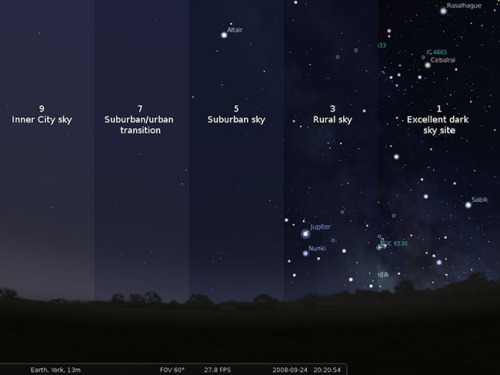
People think they know darkness, and that they experience darkness everyday, but they don’t, really.
Across the United States, natural darkness is an endangered resource. East of the Mississippi, it is already extinct; even in the West, night sky connoisseurs admit that it’s quicker to find true darkness by flying to Alice Springs, Australia, than traveling to anywhere in the lower forty-eight.
Ever since the nation’s first electric streetlight made its debut in Cleveland, on April 29, 1879, the American night has become steadily brighter. In his new book, The End of Night: Searching for Natural Darkness in an Age of Artificial Light, Paul Bogard aims to draw attention to the naturally dark night as a landscape in its own right — a separate, incredibly valuable environmental condition that we overlook and destroy at our own peril.
Read More.
Solar System: Things to Know This Week
Like sailors of old, the Cassini mission team fondly thinks of the spacecraft as “she." On April 22, she begins her Grand Finale, a spectacular end game—22 daring dives between the planet’s atmosphere and innermost rings. Here are 10 things to know about her Grand Finale.

1. She’s Broadcasting Live This Week
On Tuesday, April 4 at 3 p.m. EDT (noon PDT), At Jet Propulsion Laboratory, the Cassini team host a news briefing to discuss the mission’s Grand Finale.
Tune in Tuesday: youtube.com/nasajpl/live

2. She’s Powered in Part By … Titan
Cassini left Earth with less than 1/30th of the propellant needed to power all her adventures at Saturn. The navigation team used the gravity of Saturn’s giant moon Titan to change course and extend the spacecraft’s exploration of Saturn. Titan also provides the gravity assist to push Cassini into its final orbits.
More on Cassini’s navigation: saturn.jpl.nasa.gov/mission/spacecraft/navigation/

3. She’s a Robot
Cassini is an orbiter that was named for 18th century astronomer Giovanni Domenico Cassini. She was designed to be captured by Saturn’s gravity and then explore it in detail with a suite of 12 powerful science instruments.
More on the Spacecraft: saturn.jpl.nasa.gov/mission/spacecraft/cassini-orbiter/

4. She Brought a Friend to Saturn
Cassini carried the European Space Agency’s Huygens Probe, which in 2005 descended through Titan’s thick, perpetual clouds and made the most distant landing to date in our solar system.
More on Huygens: saturn.jpl.nasa.gov/mission/spacecraft/huygens-probe/

5. She’s a Great Photographer
Your mobile phone likely captures dozens of megapixels in images. Cassini, using 1990s technology closer to one megapixel cameras, has returned some of the most stunning images in the history of solar system exploration.
Cassini Hall of Fame Images: go.nasa.gov/2oec6H2 More on Cassini’s Cameras: saturn.jpl.nasa.gov/imaging-science-subsystem/

6. She’s an Inspiration
Those great images have inspired artist’s and amateur image processors to create truly fantastic imagery inspired by the beauty of Saturn. Feeling inspired? There’s still time to share your Cassini-inspired art with us.
Cassini Inspires Campaign: saturn.jpl.nasa.gov/mission/cassiniinspires/

7. She’s Got a Long History
Two decades is a long time to live in the harsh environment of outer space (respect to the fast-approaching 40-year-old twin Voyager spacecraft). Launched in 1997, Cassini logged a lot of milestones over the years.
Explore the Cassini Timeline: saturn.jpl.nasa.gov/the-journey/timeline/

8. She Keeps a Diary
And, you can read it. Week after week going back to 1997, Cassini’s adventures, discoveries and status have been chronicled in the mission’s weekly significant events report.
Read It: https://saturn.jpl.nasa.gov/news/?topic=121

9. She’s Got a Fancy New App
Cassini was the prototype for NASA’s Eyes on the Solar System 3-D visualization software, so it’s fitting the latest Cassini module in the free, downloadable software is the most detailed, elaborate visualization of any mission to date.
Fly the Mission - Start to Finish: http://eyes.nasa.gov/cassini

10. She’s Going Out in a Blaze of Glory
In addition to all the new information from 22 orbits in unexplored space, Cassini’s engineers reprogrammed the spacecraft to send back details about Saturn’s atmosphere to the very last second before the giant planet swallows her up on Sept. 15, 2017.
More on the Grand Finale: saturn.jpl.nasa.gov/grandfinale
Discover more lists of 10 things to know about our solar system HERE.
Make sure to follow us on Tumblr for your regular dose of space: http://nasa.tumblr.com
My microphone just arrived! Now to set it up and figure out how the hell it works....

I’ve been dropping the word ‘spectroscopy’ with only minimal explanation for quite a few episodes now and it’s high time I expanded on this topic. Join me for the double-digit episode of this podcast to learn about the history of spectroscopes and spectroscopy, how it taught us about the Sun and stars, and what advancements were made to take spectroscopes into the 20th century.
Below the cut are sources, music credits, a vocabulary list, a timeline of all the astronomers and chemist and physicists I mention, and the transcript of this episode. Let me know what you think I should research next by messaging me here, tweeting at me at @HDandtheVoid, or asking me to my face if you know me in real life. And please check out the podcast on iTunes, rate it or review it if you’d like, subscribe, and maybe tell your friends about it if you think they’d like to listen!
(My thoughts on the next episode were probes through the ages or the transit of Venus. I could also talk about more modern spectroscopy, and I’m planning to interview a friend after the eclipse next week about her graduate-level research into the history of the universe. Let me know by the 17th and I’ll have the next podcast up on August 28th, barring any new-job-related delays.)
Glossary
absorption lines - dark spectral lines that appear in a spectroscope when a gaseous or burned-up element has light shone through it.
angstrom - a unit of length—one hundred-millionth of a centimeter—that is usually used to express wavelengths and the distances in atoms.
emission lines - bright spectral lines that appear in a spectroscope when you burn an element up.
Fraunhofer lines - a standard set of spectral absorption lines observed by Joseph von Fraunhofer. He mapped 574 lines and designated them alphabetically from red to violet in the spectrum with the letters A through K, with weaker lines assigned other, lowercase letters.
incandescent - luminous or glowing due to intense heat.
spectroscopy - the study of light from an incandescent source (or, more recently, electromagnetic radiation and other radiative energy) that has its wavelength dispersed by a prism or other spectroscopic device that can disperse an object’s wavelength. The spectra of distant astronomical objects like the Sun, stars, or nebulae are patterns of absorption lines that correspond to elements that these objects are made up of. This area of study is the major source of the study of astrophysics as well as advancements in chemistry, astronomy, and quantum mechanics.
Script/Transcript
Sources
Prisms vs. diffraction gratings via CSIRO
Definition of ‘angstrom’ via Encyclopedia Brittanica
Definition of ‘incandescent’ via Merriam-Webster
Current uses of spectroscopy in astronomy
Some past and current satellites with spectroscopic capabilities via a John Hopkin’s professor’s old webpage
Spectral classification of stars via University of Nebraska-Lincoln
Common, A. A. “Astronomy.” In Popular Astronomy 8 (1900), 417-24. Located on Google Books preview.
Hirshfeld, Alan. Starlight Detectives. Bellevue Library Press: NY, 2014.
“the Fraunhofer lines, as they were soon to be called, originate in the sun itself, and are neither optical artifacts of the spectroscope nor the result of selective absorption of sunlight within earth’s atmosphere” (168-9).
“the flame’s radiance did not ‘fill in’ the dark D [sodium] lines , as [Kirchhoff] had expected, but reinforced the absorption of these wavelengths of light” (178).
Kirchhoff: “the dark lines of the solar spectrum … exist in the consequence of the presence, in the incandescent atmosphere of the sun, of those substances which in the spectrum of a flame produce bright lines in the same plane” (178).
“a body with a propensity to emit light at a given wavelength must have an equal propensity to absorb light at that wavelength” (178).
“expresses the wavelength of a spectral line, depending on its derivation angle and the density of grooves in the grating” (187).
“mosaic of the solar spectrum assembled from prints of twenty-eight negatives” (187).
“visual confirmation of the chemical unity of the Sun and stars” (203).
Doppler “claimed in 1842 that the perceived frequency of a wave is altered by one’s state of motion” (209).
“In Doppler’s schema, waves from a steadily approaching source are compressed: as their frequency is increased, their wavelength is shortened. Waves from a steadily receding source are stretched: as their frequency is reduced, their wavelength is elongated” (210).
“Yet history has shown that credit for an evolving theory or field, such as stellar spectrum photography, often goes not to individuals who are first to publish, but to those who most convincingly establish the validity and worth of their results” (223).
“Vogel confirmed that the Sun does not rotate as a solid body; Its rotation rate varies with solar latitude, fastest at the equator, progressively slower towards the poles” (231).
“The deviation of the star’s G line from its solar position revealed the star’s Doppler shift and, via a mathematical formula, its line-of-sight motion” (232).
“What Pickering had accomplished for stellar spectral classification with the Henry Draper project, Campbell had accomplished for stellar radial velocities with the Lick catalog” (233).
Johnson, George. Miss Leavitt’s Stars. Atlas Books: NY, 2005.
“When Kirchhoff and Bunsen made the discovery, the existence of atoms was still controversial. Once they were discovered, the effect could be simply understood: when an atom is energized, its electrons jump into higher orbits. When they fall back down they emit various frequencies of light. Every kind of atom is built a little differently, its electrons arrayed in a specific way, resulting in a characteristic pattern. For similar reasons, if you shine a light through a gaseous substance, like hydrogen or helium, certain colors will be filtered out. The result in this case is a characteristic pattern of black ‘absorption’ lines interrupting the spectrum—another unique chemical fingerprint. (The same colors marked by the absorption lines would appear as bright emission lines if the element was burned.)” (102-103).
Rhodes, Richard. The Making of the Atomic Bomb. 2nd ed. Simon & Schuster: NY, 2012.
Timeline
William Herschel, German/English (1738-1822)
Thomas Melvill, American (1751-1832)
William Hyde Wollaston, English (1766-1828)
David Brewster, Scottish (1781-1868)
Françoise Arago, French (1786-1853)
Joseph von Fraunhofer, Bavarian (1787-1826)
William Henry Fox Talbot, English (1800–1877)
George Airy, English (1801-1892)
Christian Doppler, Austrian (1803-1853)
Robert Wilhelm Bunsen, German (1811-1899)
Anders Ångström, Swedish (1814-1874)
Lewis Morris Rutherfurd, American (1816-1892)
William Allen Miller, English (1817-1870)
Pietro Angelo Secchi, Italian (1818-1878)
Armand-Hippolyte-Louis Fizeau, French (1819-1896)
William Huggins, English (1824-1910)
Gustav Kirchhoff, German (1824-1887)
Giovanni Battista Donati, Italian (1826-1873)
James Clerk Maxwell, Scottish (1831-1879)
Henry Draper, American (1837–1882)
Mary Anna Palmer Draper, American (1839–1914)
Hermann Carl Vogel, German (1841-1907)
Edward Charles Pickering, American (1846–1919)
Margaret Lindsay Huggins, Irish/English (1848-1915)
Henry Augustus Rowland, American (1848-1901)
Williamina “Mina” Fleming, Scottish (1857–1911)
William Wallace Campbell, American (1862-1938)
Annie Jump Cannon, American (1863-1941)
Antonia Maury, American (1866-1952)
Vesto Melvin Slipher, American (1875-1969)
Edwin Hubble, American (1889-1953)
Intro Music: ‘Better Times Will Come’ by No Luck Club off their album Prosperity
Outro Music: ‘Fields of Russia’ by Mutefish off their album On Draught

RIP, little buddy.
-
 zareblogalogalog reblogged this · 2 years ago
zareblogalogalog reblogged this · 2 years ago -
 tumblingtumblertime liked this · 5 years ago
tumblingtumblertime liked this · 5 years ago -
 mothragender liked this · 6 years ago
mothragender liked this · 6 years ago -
 agif4u reblogged this · 6 years ago
agif4u reblogged this · 6 years ago -
 agif4u liked this · 6 years ago
agif4u liked this · 6 years ago -
 nonesensedreferences reblogged this · 6 years ago
nonesensedreferences reblogged this · 6 years ago -
 oldman2014 liked this · 7 years ago
oldman2014 liked this · 7 years ago -
 cardstumble liked this · 7 years ago
cardstumble liked this · 7 years ago -
 ram7126 liked this · 7 years ago
ram7126 liked this · 7 years ago -
 tdmw liked this · 7 years ago
tdmw liked this · 7 years ago -
 troyonhudson reblogged this · 7 years ago
troyonhudson reblogged this · 7 years ago -
 red-meds1990 reblogged this · 7 years ago
red-meds1990 reblogged this · 7 years ago -
 eccentric-alien reblogged this · 7 years ago
eccentric-alien reblogged this · 7 years ago -
 theexperiment13 reblogged this · 7 years ago
theexperiment13 reblogged this · 7 years ago -
 riannkrusnik13 reblogged this · 7 years ago
riannkrusnik13 reblogged this · 7 years ago -
 riannkrusnik13 liked this · 7 years ago
riannkrusnik13 liked this · 7 years ago -
 wandererofthevoid liked this · 7 years ago
wandererofthevoid liked this · 7 years ago -
 fillthevoid-with-space reblogged this · 8 years ago
fillthevoid-with-space reblogged this · 8 years ago -
 thisonetimeatartschool reblogged this · 8 years ago
thisonetimeatartschool reblogged this · 8 years ago -
 saklikalanduygular-blog reblogged this · 8 years ago
saklikalanduygular-blog reblogged this · 8 years ago -
 saklikalanduygular-blog liked this · 8 years ago
saklikalanduygular-blog liked this · 8 years ago -
 dingochanm00n reblogged this · 8 years ago
dingochanm00n reblogged this · 8 years ago -
 little-miss-no-one liked this · 9 years ago
little-miss-no-one liked this · 9 years ago -
 beef71 liked this · 9 years ago
beef71 liked this · 9 years ago -
 schniggles liked this · 9 years ago
schniggles liked this · 9 years ago -
 tonsvazios liked this · 9 years ago
tonsvazios liked this · 9 years ago -
 trivioso reblogged this · 9 years ago
trivioso reblogged this · 9 years ago -
 nyc-uws reblogged this · 9 years ago
nyc-uws reblogged this · 9 years ago -
 nyc-uws liked this · 9 years ago
nyc-uws liked this · 9 years ago -
 hedminreg liked this · 9 years ago
hedminreg liked this · 9 years ago -
 xxdassbassxx reblogged this · 9 years ago
xxdassbassxx reblogged this · 9 years ago -
 xxdassbassxx liked this · 9 years ago
xxdassbassxx liked this · 9 years ago -
 allallestodo reblogged this · 9 years ago
allallestodo reblogged this · 9 years ago -
 whatwouldwillow-do reblogged this · 9 years ago
whatwouldwillow-do reblogged this · 9 years ago
A podcast project to fill the space in my heart and my time that used to be filled with academic research. In 2018, that space gets filled with... MORE SPACE! Cheerfully researched, painstakingly edited, informal as hell, definitely worth everyone's time.
243 posts

